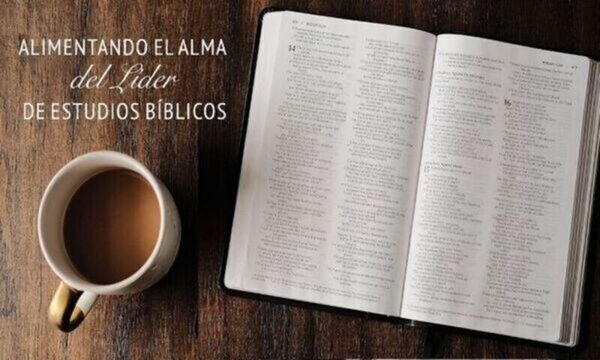This is the weekly Q & A blog post by our Research Professor in Philosophy, Dr. William Lane Craig.
Question
Dr. Craig,
In your debates on the Resurrection, you often present four facts that the majority of New Testament scholars support, namely the honorable burial, the discovery of the empty tomb by women, the post-Resurrection appearances, and the disciples' genuine belief in the Resurrection. While the majority of scholars support these facts, my question has to do with the minority who disagree. For example, John Dominic Crossan has claimed Jesus was buried in a shallow grave, where his body was eaten by wild dogs. My question is this: from what sources do scholars who disagree with the four facts stated above draw their conclusions? The way I understand it, there are very few extra-Biblical sources that discuss the Resurrection, and none that contradict the four facts stated above. And the Canonical Gospels make it very clear that the four facts are indeed what happened. So on what grounds do these dissenting scholars dispute the four facts stated above?
Thank you.
Jake
United States
Dr. William Lane Craig’s Response
 I remember well, Jake, my astonishment when I first read that Crossan believes that Jesus’ corpse was not properly entombed, as the Gospels describe, but thrown into a shallow grave, where it was probably dug up and eaten by wild dogs. Having already completed my doctoral work in Germany on the historicity of Jesus’ resurrection, I was well-aware that the large majority of New Testament historians find the evidence for Jesus’ burial in a tomb by Joseph of Arimathea to be convincing.[1] So I wondered, what evidence does Crossan have to think that the majority of scholars are wrong about this? How does he refute the multiple lines of evidence that have convinced most scholars of the fact of Jesus’ entombment by Joseph of Arimathea? What evidence has he uncovered that would lead us to think that Jesus’ body was instead dispatched as Crossan imagines?
I remember well, Jake, my astonishment when I first read that Crossan believes that Jesus’ corpse was not properly entombed, as the Gospels describe, but thrown into a shallow grave, where it was probably dug up and eaten by wild dogs. Having already completed my doctoral work in Germany on the historicity of Jesus’ resurrection, I was well-aware that the large majority of New Testament historians find the evidence for Jesus’ burial in a tomb by Joseph of Arimathea to be convincing.[1] So I wondered, what evidence does Crossan have to think that the majority of scholars are wrong about this? How does he refute the multiple lines of evidence that have convinced most scholars of the fact of Jesus’ entombment by Joseph of Arimathea? What evidence has he uncovered that would lead us to think that Jesus’ body was instead dispatched as Crossan imagines?
Well, you can imagine my disappointment when I discovered, upon reading his work, that Crossan presents no specific evidence, much less convincing evidence, for his hypothesis concerning the fate of Jesus’ corpse. Rather, the above scenario represents just his hunch as to what happened to the body of Jesus based on what Crossan takes to be customary burial procedures.[2] Since he doesn’t accept the historicity of the discovery of the empty tomb (not to speak of the resurrection), Crossan, working backwards, realizes that he has to deny the historicity of the burial account as well. For if the burial account is accurate, the site of Jesus’ grave was known in Jerusalem to both Jew and Christian alike, which would make a movement founded on belief in the resurrection of a dead man impossible in Jerusalem in the face of a tomb containing his corpse. So Crossan is forced to deny a fact that is accepted by the wide majority of New Testament scholars today.
Crossan surmises that Jesus’ corpse was laid in a dirt graveyard normally reserved for executed criminals; but he offers no specific evidence for this surmise.[3] Instead, he seeks to undercut the credibility of the Gospel accounts of Jesus’ burial and resurrection by means of a general analysis of the Gospel texts and traditions. Unfortunately, his tradition-historical analysis is so bizarre and so contrived that the overwhelming majority of New Testament critics find it wholly implausible.[4] See my critique of Crossan’s analysis.[5]
What’s really driving Crossan’s skepticism is not historical, but philosophical, considerations, namely, Crossan’s anti-supernaturalism. As emerges under cross-examination in my debate with Crossan on Jesus’ resurrection, Crossan is, in fact, an atheist who thinks that God is just a construct of the human imagination which believers impose on reality.[6] Therefore a supernatural event like the resurrection is a priori impossible, regardless of the evidence.
This post and other resources are available on Dr. William Lane Craig's website:
[1] I lay out the evidence which has convinced most scholars of the historicity of Jesus’ entombment in Reasonable Faith, 3rd ed. (Wheaton, Ill.: Crossway, 2008), pp. 361-71. See also on .
[2] John Dominic Crossan, Who Killed Jesus? Exposing the Roots of Anti-Semitism in the Gospel Story of the Death of Jesus (San Francisco: HarperSan Francisco, 1994), ch. 6; idem, The Historical Jesus: The Life of a Mediterranean Jewish Peasant (San Francisco/Edinburgh: HarperSan Francisco/T. & T. Clark, 1991), pp. 392-393; idem, The Cross that Spoke: The Origins of the Passion Narrative (San Francisco: Harper & Row, 1988), pp. 21, 235-240; idem, Four Other Gospels (Minneapolis: Winston, 1985), pp. 153-164.
[3] In fact, Crossan seems to have seriously misunderstood normal burial customs in Israel. In Judaism, corpses were regarded as unclean and would defile anything that they came into contact with. It would be unthinkable, then, that the Jewish authorities would allow corpses to be buried in such a way as to be dug up by dogs, which could then run about the streets of the holy city of Jerusalem carrying human bones! Indeed, it may well have been the case that even the bodies of executed criminals were placed in communal tombs with the remains of other criminals, so as not to defile anything else.
[4] In a blistering critique Howard Clark Kee hails Crossan’s procedure as “a triumph of circular reasoning” (Kee, “A Century of Quests of the Culturally Compatible Jesus,” Theology Today, 52 [1995]: 22; cf. p. 24). Slightly more charitably, N. T. Wright says that Crossan’s Historical Jesus “is a book to treasure for its learning, its thoroughness, its brilliant handling of multiple and complex issues, its amazing inventiveness, and above all its sheer readability…. It is all the more frustrating, therefore, to have to conclude that the book is almost entirely wrong” (Wright, Jesus and the Victory of God [Minneapolis: Fortress, 1996], p. 44). Similarly, Ben Meyer praises the book for its readability, rapid pace, and useful information, but concludes: “As historical-Jesus research, it is unsalvageable” (Meyer, critical notice of The Historical Jesus, Catholic Biblical Quarterly 55 [1993], p. 576).
[5] “John Dominic Crossan on the Resurrection of Jesus,” in The Resurrection, ed. S. Davis, D. Kendall, and G. O’Collins (Oxford: Oxford University Press, 1997), pp. 249-271.
[6] Will the Real Jesus Please Stand Up? With John Dominic Crossan. Ed. Paul Copan with responses by Robert Miller, Craig Blomberg, Marcus Borg, and Ben Witherington III (Grand Rapids, Mich.: Baker Bookhouse, 1998), pp. 49-51.
 51ÂÜŔň
51ÂÜŔň
.jpg)
.jpg)
.jpg)
